A yard full of lush, healthy grass is something many homeowners desire. However, you might have questions about seeding grass and whether you can walk on new grass seed. Appearances are deceiving, as grass seed needs some TLC before it germinates and gradually establishes strong root systems. Lawn care experts provided some helpful answers to your questions.
No, you should not walk on new grass seed, as it can upset its growth and health. Grass seed will need at least 4 weeks to get settled and start sprouting and growing roots. Before grass seeds get established, walking on them can cause less than desirable results with your yard.
Are you curious about how hardy grass seed is, or do you want tips to improve germination success and get a full, green yard of grass? Keep reading as we discuss how to seed grass, answer related questions, and more!
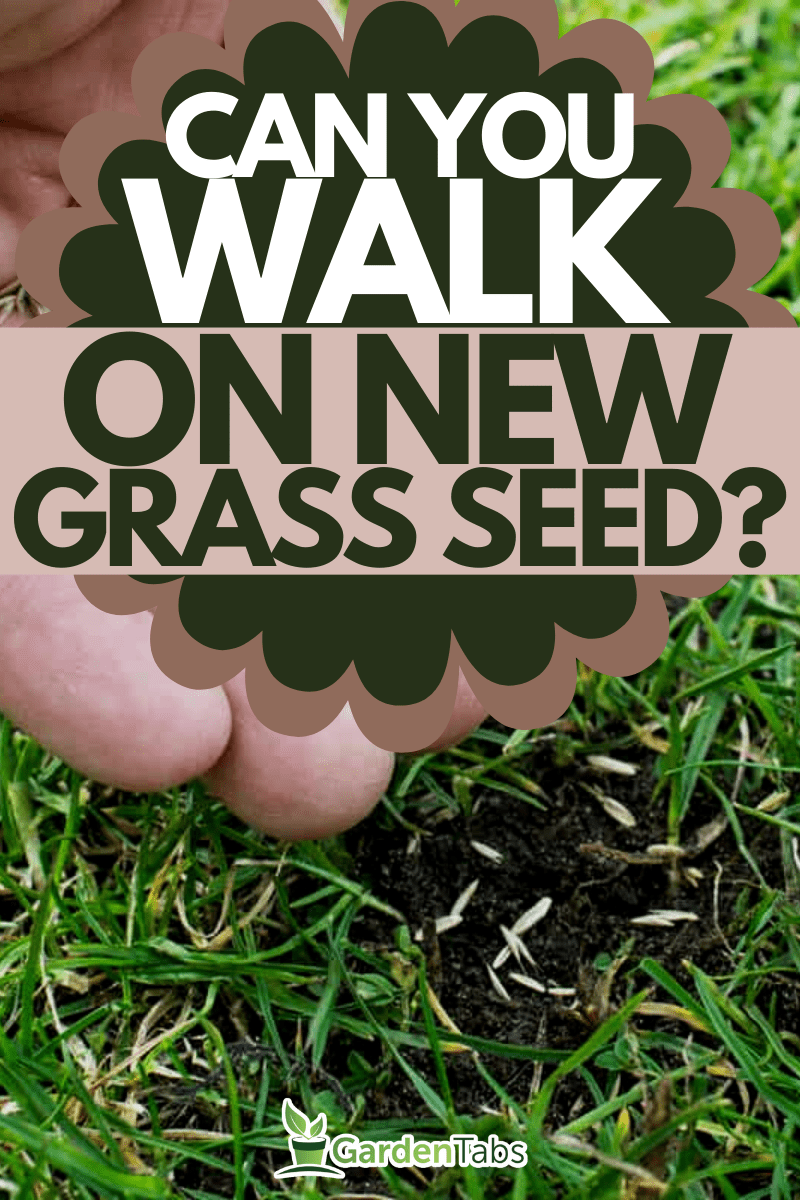
What To Know About Seeding Grass

At first glance, it seems like a pretty underwhelming process to plant grass seed. However, it's critical to take certain measures to ensure you end up with a nice-looking yard rather than struggle with patches where grass won't take.
If you are planting new grass or touching up an older yard, you won't want to simply sprinkle it over the topsoil and let nature take over.
How Long After Planting Grass Seed Can You Walk On It?
Give your grass seed at least 4 weeks before you walk on it. However, some suggest waiting between 8 to 12 weeks if possible to give grass seed a good start.
Depending on the variety of grass you are growing and your plant zone, it may take grass anywhere from 5 to 30 days to grow. For many types of grass, seeds will germinate and show some promise after 10 to 14 days.
However, gardeners should know that this is just the beginning. You won't be able to mow a grass lawn until at least 2 months or longer following seed germination. The grass is still young and most likely not long enough to warrant running over it with a lawn mower.
Will Walking On New Grass Seed Kill It?
No, walking on new grass seed won't necessarily kill it. However, it might cause some damage or negatively impact its growth, if it germinates and takes root at all. There are a few reasons why walking on new grass seed can be a bad thing.
First, if you tread on grass seed, it might compact the soil, which will make it difficult for the seed to get water and nutrients and establish roots. Second, walking on freshly laid grass seed might damage the seed's hull or exterior, which might cause it to fail to germinate.
Another concern is walking on new grass seed within the first 2 weeks after putting it down. The grass is still very vulnerable and not hardy enough to withstand being tread upon. Months later, it should come as no surprise if young grass dies or there are patches where grass failed to grow on the lawn.


Check out this Bermuda grass seed on Amazon.
Now, some gardeners might want to choose a fast-growing variety of grass. Grass varieties like St. Augustine or Bermuda might be more hardy and be able to better withstand being tread upon.
If you don't have a lawn roller to help new grass seed settle in the soil, walking on seed lightly might be beneficial. However, it's critical to avoid walking on new grass seed so it has time to grow and eventually thrive.
Will Grass Seed Grow If Stepped On?
Most grasses are pretty tough, so walking on them will probably cause some damage. However, some grass seed might survive getting stepped on and still establish roots. It's best to avoid stepping on newly seeded lawns and grass seed. Wait at least 2 to 4 weeks if you have to walk on a lawn and tread lightly.
How To Seed A Lawn Step By Step
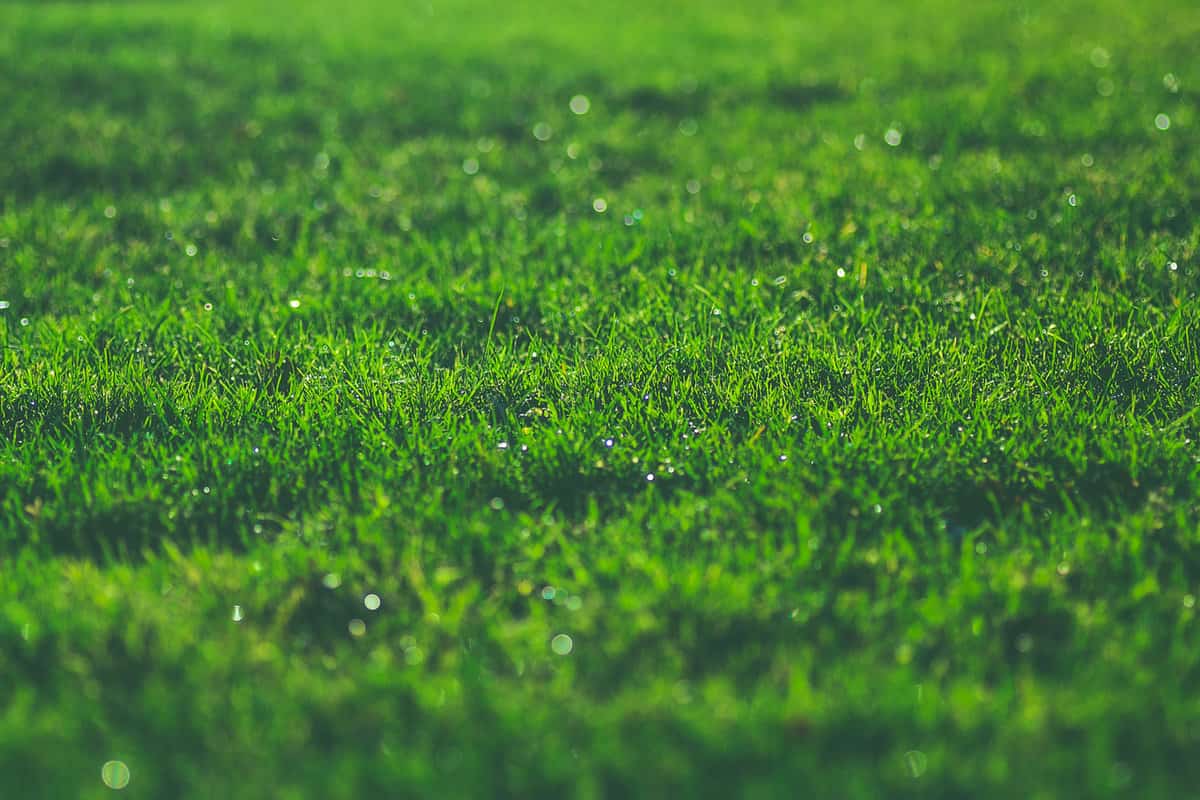
There's more to growing a brilliant, healthy green lawn of grass than sprinkling seeds on the surface and walking away. Learn how to seed your lawn step by step to get the best results.
First, know your planting grow zone and choose an appropriate variety of grass for your location. Second, choose an optimal time to plant grass seed. Depending on whether you are growing a warm- or cool-season grass, it might be better to plant seed in early fall, spring, or early summer.
Step 1
Dig into the soil or till the soil to prepare the ground to accept the grass seed. Create a depth of 3 inches so the seed can establish itself. Ensure there is a margin for drainage.
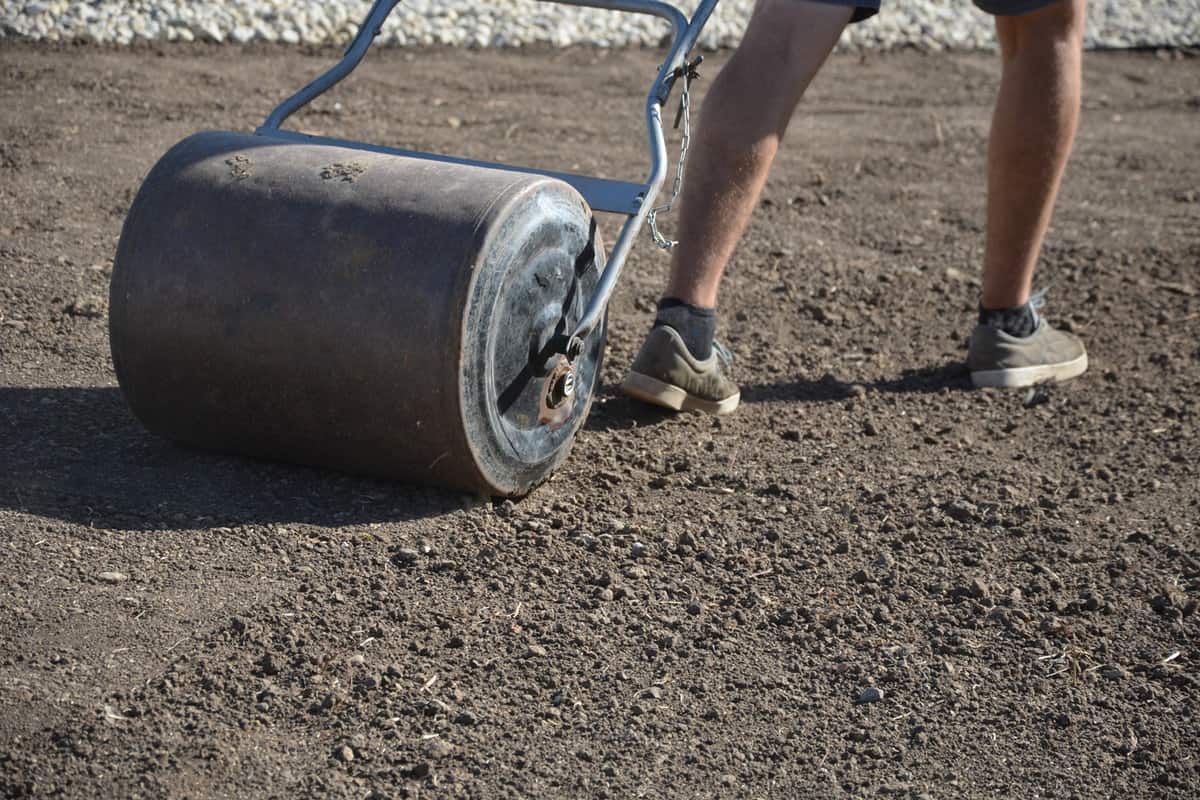
Step 2
Condition the soil by adding some fertilizer or topsoil. Make sure your soil conditioner of choice is worked into the dirt thoroughly.


Check out this fertilizer for new grass seed on Amazon.
Step 3
Read over the packaging for the grass seed. Spread the ideal amount of grass seed, seeking total coverage of the prepared soil.
For best results, seed half of the grass in one direction, then go crisscross in the opposite direction and seed the other half. If you wish, soak the seeds before planting to encourage germination and wake up the seeds.
Step 4
Cover the grass a bit using mulch, straw, or soil, or use an erosion blanket so the new seeds don't get blown away or eaten. Experts don't recommend leaving the grass seeds uncovered.


Check out this natural jute soil erosion blanket on Amazon.
Step 5
Water the seeds modestly, but avoid saturating the earth. Reduce how often you water the new grass seeds once you see that the grass is 1 inch in height.
Can You Use Too Much Grass Seed?
Yes, even with grass seed, you can have too much of a good thing. For best results, follow the manufacturer's suggestions for planting grass seed.
Planting more seed than needed won't end up giving you the yard of your dreams. When you put down too much grass seed, you create unnecessary competition between seeds, leaving plenty of seeds to struggle to grow roots, get nutrients, and eventually perish.
Resist the urge to coat your prepared soil with too many seeds. Put down just enough grass seeds so each one can touch the soil, get ample nutrients, water, and a chance to mature.
Will Uncovered Grass Seed Grow?
Most grass seeds are pretty tough. So, yes, if you leave them uncovered in the soil, they will most likely grow. However, this is not the best scenario for a lush green yard. New seeds need moisture, nutrients, and some protection from getting blown away or eaten.
The best solution is to cover new seeds with a bit of topsoil, mulch, fertilizer, or a soil erosion blanket to help them thrive. Covered seeds will do better and give a yard more grass coverage than one left to chance, out in the open and uncovered.
How Long Does It Take Grass Seeds To Sprout?
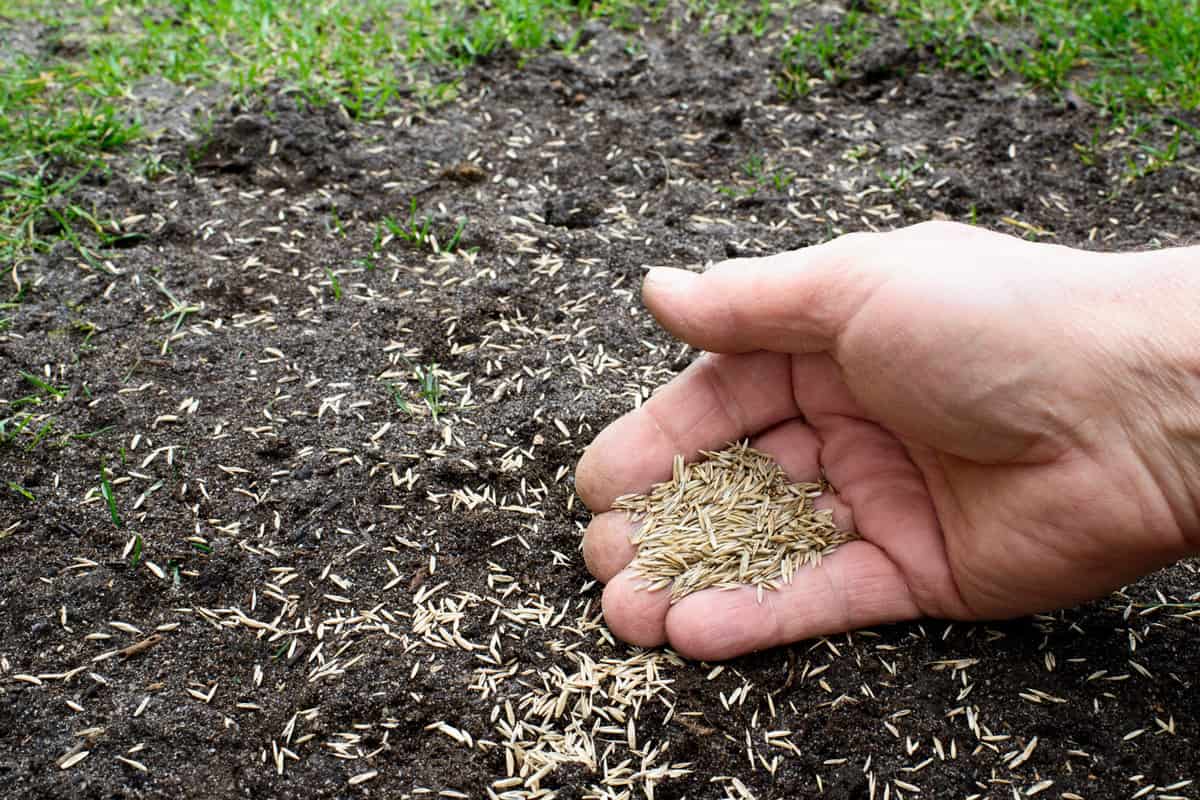
The time it takes grass seeds to sprout depends on your growing zone, the variety of grass, the condition of the soil, and whether measures are taken to promote germination.
Here are some average times it takes grass seeds to sprout. Remember, the growth rate may vary slightly based on soil pH, temperature, and time of planting:
- Bermuda: 10 to 30 days
- Buffalo: 14 to 30 days
- Centipede: 14 to 21 days
- Kentucky bluegrass: 7 to 10 days
- Ryegrass: 5 to 10 days
- Tall fescue: 7 to 12 days
Some gardeners choose to soak grass seed before planting to wake them up. Another option is to condition the soil with fertilizer and water seeds as needed to promote growth.
Why Did My Grass Seed Not Germinate?

It can be a real disappointment when grass seed fails to germinate, leaving an uneven, patchy yard. So, what went wrong? There are a few reasons your grass seed didn't germinate, which might be one of the following points below.
The Temperature
First off, did you plant your grass seeds at the optimal time for your region and planting zone? Certain varieties of grass seed need a specific temperature range to thrive.
Sunlight Levels
Was your grass seed planted in shady areas where it received little to no sunlight? To start germination, seeds need to be at the right temperature, get sufficient water and nutrients, and have exposure to sunlight.
A minimum of 3 to 4 hours of sunlight can make a world of difference, helping grass produce chlorophyll and encourage photosynthesis.
The pH Level
Unfortunately, if the soil is too acidic or alkaline, grass seed might have difficulty germinating.
Research your grass variety before planting and do a test soil before planting. Don't forget to condition your soil as needed to help keep your grass healthy. Read this post to learn more: Does Clay Soil Need Lime? [And How Much To Use]


Check out this pH meter for soil on Amazon.
Watering
It's essential to be cautious when watering new grass seed. Watering too much or too often can drown seeds and rob them of nutrients and encourage rot.
Equally, not watering seeds enough can leave them parched and withering. Alter your watering schedule depending on whether you live in a drought-prone area or experience heavy rains.
Quick Recap
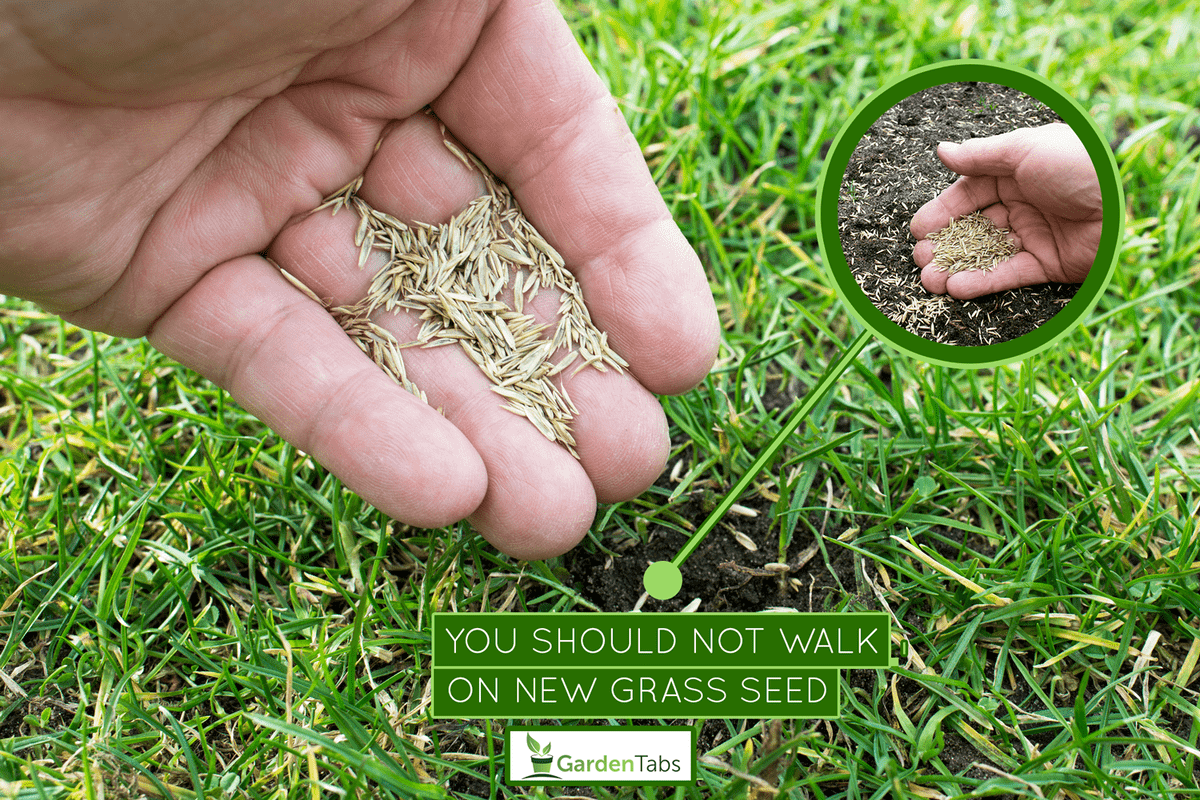
So, you learned it is best to avoid walking on newly seeded grass to give them a chance to establish themselves and thrive.
Depending on your growing zone and the variety of grass planted, expect to wait up to 30 days for the grass to get out of the danger zone. Once the grass is about 2 months old, it can better tolerate being walked on.
Did you enjoy what you read? If so, check out these other informative posts:
